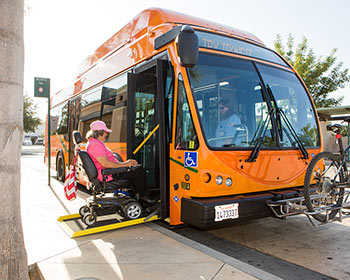Project Details
| Title: | An Analysis of NHTS Travel Behavior Data for Transportation-Disadvantaged and Rural Populations |
| Principal Investigators: | Jeremy Mattson |
| Start Date: | February 2021 |
| End Date: | February 2022 |
| Status: | Completed |
Abstract
 Older adults, people with disabilities, individuals in low-income households, and those living in rural areas can face significant mobility challenges. This study examines travel behavior and mobility of these transportation-disadvantaged groups by analyzing data from the National Household Travel Survey (NHTS). Previous research by SURCOM quantified differences in travel behavior and mobility based on age, disability, household income, geography, and the ability to make trips, with a focus on rural populations. This study used data from the 2001 and 2009 NHTS. The study demonstrated differences in mobility between different population groups. People with disabilities or medical conditions were found to make significantly fewer trips than others, while expressing a desire to get out more often. It also showed that older women were driving more and making more trips, slowly closing the gap between older men and women.
Older adults, people with disabilities, individuals in low-income households, and those living in rural areas can face significant mobility challenges. This study examines travel behavior and mobility of these transportation-disadvantaged groups by analyzing data from the National Household Travel Survey (NHTS). Previous research by SURCOM quantified differences in travel behavior and mobility based on age, disability, household income, geography, and the ability to make trips, with a focus on rural populations. This study used data from the 2001 and 2009 NHTS. The study demonstrated differences in mobility between different population groups. People with disabilities or medical conditions were found to make significantly fewer trips than others, while expressing a desire to get out more often. It also showed that older women were driving more and making more trips, slowly closing the gap between older men and women.
Since the previous research by SURCOM was completed, a more recent NHTS was conducted in 2017. An analysis of the more recent data would reveal whether the trends previously identified have continued or changed. It would provide information about whether the trip-making ability and travel behavior of transportation-disadvantaged groups, particularly those in rural areas, have changed during the previous decade. It would also examine changes in mode shares during this period, including the use of transit and other alternative modes in rural areas. Other studies have analyzed the 2017 NHTS data, but there is a lack of comprehensive research examining travel behavior of transportation-disadvantaged populations in rural areas.
Understanding trends in the travel behavior of transportation-disadvantaged populations in rural areas is important for understanding how well the mobility needs of these populations are being met and for informing policy and transportation investment decisions. Trends among demographic groups, such as older adults, low-income households, carless households, and people with disabilities are important to study as they have implications for future transit ridership. The research could also help show the extent to which emerging transportation options, such as transportation network companies, are meeting the mobility needs of these populations.
Project Deliverables


